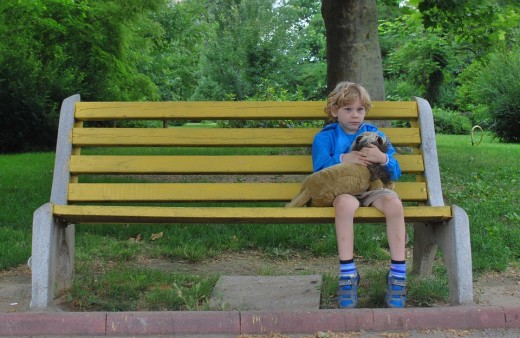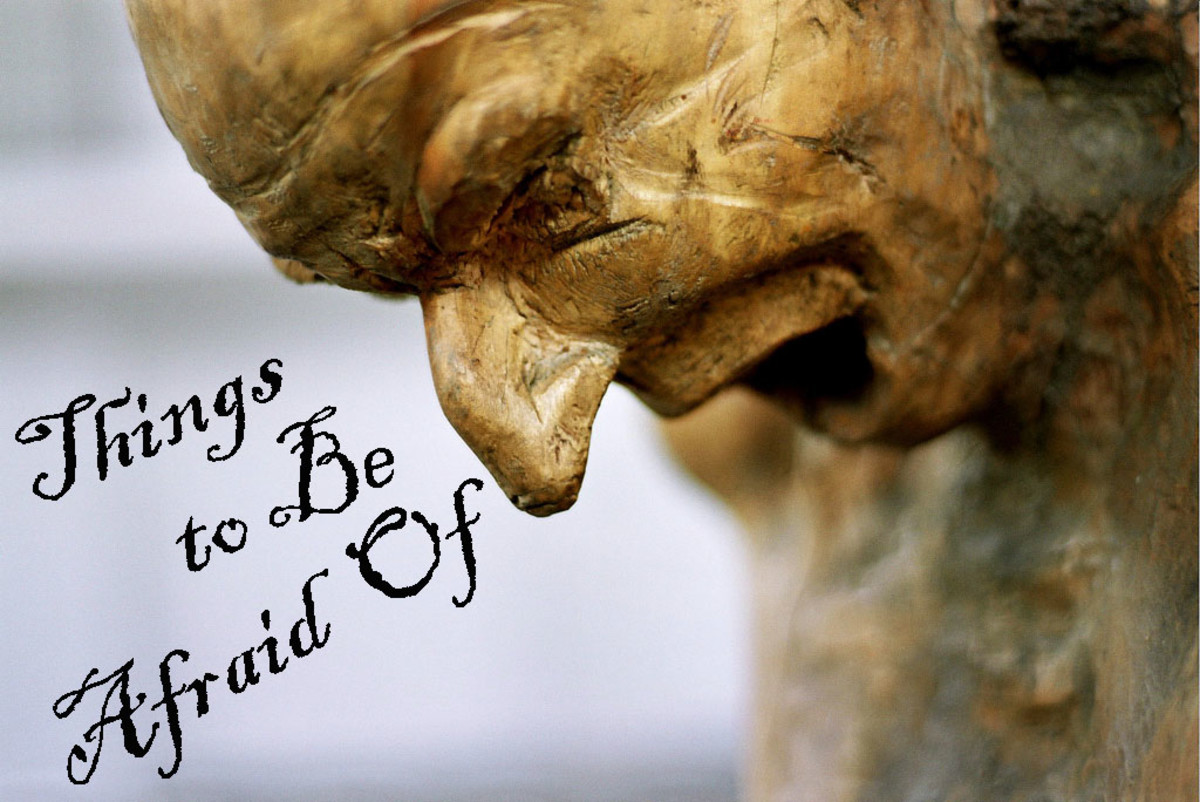Selective Mutism: When Shyness Points to Something More

What is Selective Mutism?
if you aren't sure what Selective Mutism is, you're not alone. Most people have absolutely no idea what it is, and have never even heard of it. It wasn't even discovered until the 19th century, and still to this day it is very misunderstood. Even teachers are often clueless. Which is very troubling because without awareness there can be no understanding.
Selective Mutism is basically an extreme social anxiety/shyness. Children who have SM will speak only to certain people outside of the immediate family, or may not speak at all to outsiders. Some children are able to communicate with head nods, or shorts answers such as yes or no. Some freeze up completely and are unable to communicate. They do not refrain from speaking on purpose or to be difficult. They are physically unable to get the words out because of the anxiety. Even the children who do wish very badly to speak are not able to do so because the anxiety has such a grip on them. The biggest defining characteristic of a child with SM is that they will be able to speak freely at home, but not with outsiders. There are large differences in how the SM child communicates, and when they communicate. But in general this is the biggest sign.
Because Selective Mutism lacks awareness, a lot of medical professionals are not sure how to handle it, or they just brush it off as something else entirely. Misdiagnosis can and does happen because of this. Once diagnosed though, most children do go on to lead normal lives as adults. They may always be shy, but with therapy and medication a lot of changes take place that help them learn to overcome the very thing that crippled them during their childhood. The most important thing is getting the diagnosis so that the proper help can be given as early as possible.

Warning Signs of Selective Mutism
As stated previously, the biggest sign is when you have a child who speaks freely at home, but not outside of the home. You might be thinking that this sounds a lot like shyness. And to be honest, these kids are very often mistaken as being just a kid who is shy and will grow out of it. But there are differences.
A shy child may not talk much when first getting to know somebody, but soon is able to socialize in a normal way with that person after being around them a little bit. However a child who may have SM will probably take a very long time to warm up to people, if they do at all. The key here is that Selective Mutism presents itself as extreme shyness.
Some SM children also have difficulty expressing when they are sick, hurt, angry, or sad. Sometimes even to family members who they talk to regularly. Parents become used to it, and learn to be in tune with their child so that they can "guess" how they are feeling by their facial expressions or the way they are acting.
Interaction with other children can be very minimal also, sometimes even non existent depending how severe the SM is. The child will often play alone during recess or group activities, or might have 1 or two peers that he/she associates with, although not in the same way as other kids do.
Children with Selective Mutism typically will be very animated and speak freely at home or around immediate family, but there are some that don't speak much at home either. Then there are others who speak fine at home, except when it comes to serious topics, such as details about their school day, or any problems they might be having.
Some SM kids struggle in other areas as well. They might have irrational fears and anxiety over every day things. Some may be reluctant to change, to the point of complete avoidance. A lot of these children are very picky with their eating habits also. As you can see, there is a wide variety of symptoms, and each child's symptoms will differ in a lot of ways.
Most Children Don't Display Every Symptom
While keeping those symptoms in mind, please don't think that your child doesn't have it because he or she doesn't have every single one of these symptoms. Every kid with SM is different, and displays their anxiety in different ways. I cannot stress that enough.
The severity also can differ from each child. If you question if they might have it, be aware that some pediatricians are really not very familiar with Selective Mutism, if at all. And they may be quick to brush it off as shyness that they will grow out of, especially with a younger child. Do your research online, become informed.
Additionally, if you feel it is necessary, ask for a referral to a specialist. SM treatment is much easier with a child who is young, the younger the better. Because eventually it becomes part of a habit in how they interact with others, and habits are harder to break after many years.

Selective Mutism in the Public School Setting
Selective Mutism manifests itself in many different ways in school. Typically the first and most obvious sign is that the child doesn't speak to the teachers or other staff within the school. Upon closer inspection it is usually noticed that the child also does not socialize with the other children, and often hangs back and plays alone during times of recess.
Some kids with Selective Mutism do speak to a couple of students with whom they are comfortable. Sometimes though, you can still notice a difference in the way that they interact. They might play and laugh and look like a normal kid from afar, but are not actually communicating verbally or taking part in conversations.
After it is noticed that the child is not speaking to people within a reasonable amount of time after meeting them, teachers will notice other things. Usually they will notice the child is not asking to use the restroom (wetting the pants may happen because of this with young kids), not raising their hand in class (and usually is not able to answer when called on), group projects are a noticeable problem, and also an inability to ask for help when needed.
Test stress is often a big problem as well. Selective Mutism and anxiety can cause them to score poorly on tests and quizzes, because they get themselves so flustered and nervous before it even starts. They may be highly intelligent but their test scores and grades just do not reflect it. IQ tests can be largely inaccurate for these kids unless special considerations are taken before and during the test.
In spite of these difficulties, it is not always a good idea to pull an SM child from public school to be placed in a home school setting, or cyber school. It can be really hard to deal with as a parent, because some teachers and faculty don't understand Selective Mutism. They might think that the child is just being stubborn or disobeying, even after having Selective Mutism explained to them in detail. Some think they know what is best, and actually make things harder. But pulling them from school can actually be more damaging to them in some situations.
They typically need that real world interaction in order to be able to eventually thrive, and being home schooled often is not able to give that same interaction. The very thing these children fear the most is what we must work towards them being at least comfortable with as they get older, so that they can function as easily as possible in the future. Home school or cyber school should only really be used as a last resort.
It's also important to mention that because they are a child with special needs, they are entitled to certain adjustments being made at their school. These students qualify for an IEP in most circumstances, but be prepared to fight for it. A lot of schools will try to tell you that you child isn't eligible. If they do this, speak to a parent advocate as soon as possible. Sometimes just the threat of getting a parent advocate involved will make them set up an IEP.

Myths of Selective Mutism
Because of a lack of awareness, there are many myths that follow Selective Mutism. One of the biggest is that children diagnosed with Selective Mutism are victims of some type of abuse at home. This is so far from the truth! Selective Mutism is actually very likely to be genetic. Most parents state that one of them or both were also extremely shy growing up, and wonder if they may have had Selective Mutism themselves. There is also usually a history of other types anxiety disorders as well. The thought that SM is brought on by abuse is just absurd, but there are people who believe this to be true.
Others believe that Selective Mutism is just shyness. SM actually is a FORM of shyness, but it is an extreme version of it. Typical shyness is quite different. Kids who are just shy are able to warm up to people given a little bit of time, and are then able to function normally without issue. SM kids might not ever warm up to someone, and this is especially true with teachers and other adults of authority. Because it is not only a problem with extreme shyness but also anxiety.
Another misconception is that SM kids have total control over their disability and are making a conscious decision to not speak to certain people. People just do not understand! The anxiety manifests itself in such a way that these kids are physically unable to form the words needed to communicate what they are thinking or feeling. It's like telling somebody with a broken leg that they are choosing not to walk. How cruel!

In closing, I just want to say that if you suspect Selective Mutism, please do not be afraid of seeking treatment for your child. The younger the better. There is no reason for them to struggle blindly through their school years and social lives. Help does exist, but it starts with awareness and the seeking of treatment through the proper sources. These children are not damaged or strange, actually most are wonderfully sweet and caring. Our job as adults is to help them bring out the beautiful butterfly that exists inside each and every one of them.
Some Helpful Links for Parents of Children with Selective Mutism
- Find a Treating Professional — Selective Mutism Group
- Tips for Helping Kids With Selective Mutism Go Back to School | Child Mind Institute
What to tell the teacher and how to ease kids back in. - Child Mind Institute | Transforming Children's Lives.
We are an independent nonprofit dedicated to transforming the lives of children struggling with mental health and learning disorders.
This content is for informational purposes only and does not substitute for formal and individualized diagnosis, prognosis, treatment, prescription, and/or dietary advice from a licensed medical professional. Do not stop or alter your current course of treatment. If pregnant or nursing, consult with a qualified provider on an individual basis. Seek immediate help if you are experiencing a medical emergency.
© 2016 Annalisa





